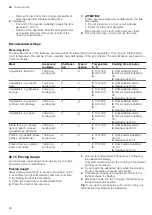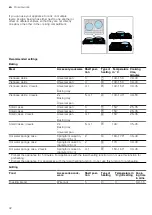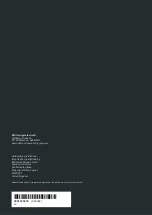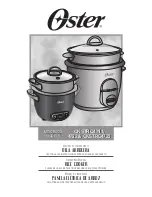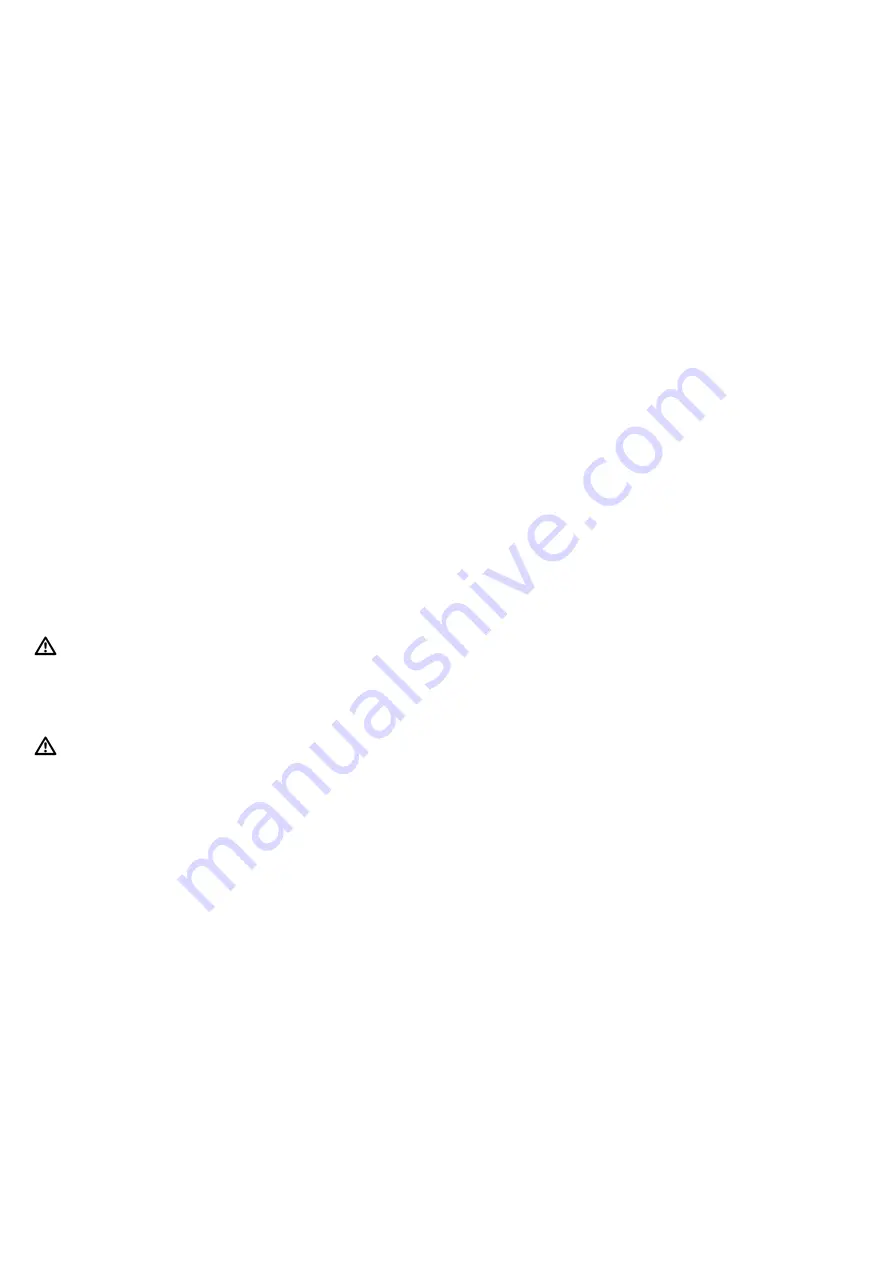
How it works
en
35
Roasting in cookware
If you cook food in cookware, you can remove it from
the cooking compartment more easily and serve it dir-
ectly in the cookware. If you cover the cookware when
you cook your food, this will keep the cooking compart-
ment cleaner.
General information about roasting in cookware
¡
Use heat-resistant, ovenproof cookware.
¡
Place the cookware onto the wire rack.
¡
Check in advance whether the cookware fits in the
cooking compartment.
¡
Glass cookware is best.
¡
Shiny roasting dishes made from stainless steel or
aluminium are not ideal. They reflect the heat like a
mirror. The food cooks more slowly and does not
brown as well. Increase the temperature accordingly
and extend the cooking time.
¡
Follow the manufacturer's instructions for your roast-
ing dishes.
Cookware without lid
¡
Use a deep roasting dish.
¡
Place the cookware onto the wire rack.
¡
If you do not have any suitable cookware, use the
universal pan.
Cookware with lid
¡
Use a suitable lid that seals well.
¡
Place the cookware onto the wire rack.
¡
Meat, poultry and fish can also become crispy in a
covered roasting dish. Use a roasting dish with a
glass lid for this. Select a higher temperature.
WARNING ‒ Risk of injury!
If hot glass cookware is placed on a wet or cold sur-
face, the glass may shatter.
▶
Place hot glass ovenware on a dry mat after cook-
ing.
WARNING ‒ Risk of scalding!
Very hot steam may escape when the lid is opened
after cooking. Steam may not be visible, depending on
the temperature.
▶
Lift the lid in such a way that the hot steam can es-
cape away from you.
▶
Keep children away from the appliance.
Notes on roasting and grilling
The setting values are based on the assumption that
unstuffed, chilled, ready-to-roast poultry, meat or fish is
placed into a cold cooking compartment.
¡
The larger the poultry, meat or fish, the lower the
temperature and the longer the cooking time.
¡
Turn the poultry, meat or fish after approx. 1/2 to
2/3 of the time listed.
¡
Add a little liquid to the poultry in the cookware.
Cover the base of the cookware with approx. 1–
2 cm of liquid.
¡
When you turn poultry, ensure that the breast side
or skin side is underneath to begin with.
¡
Use tongs to turn the pieces of food you are grilling.
If you pierce the meat with a fork, the juices will run
out and it will become dry.
¡
Only add salt to steaks once they have been grilled.
Salt draws water from the meat.
Tips for poultry, meat and fish
Observe the instructions when preparing poultry, meat
and fish
Poultry
¡
For duck or goose, pierce the skin on the underside
of the wings. This allows the fat to drain out.
¡
If using duck breast, score the skin. Do not turn
duck breasts.
¡
Poultry will turn out particularly crispy and brown if
you baste it towards the end of the roasting time
with butter, salted water or orange juice.
Meat
¡
Coat lean meat with fat as required, or separate the
pieces.
¡
When roasting, add a little liquid if the meat is lean.
Cover the base of the glass cookware with ap-
prox. 1/2 cm of liquid.
¡
Score the rind crosswise. If you turn the joint when
cooking it, ensure that the rind is underneath to be-
gin with.
¡
When the joint is ready, turn off the oven and allow
it to rest for a further 10 minutes in the cooking
compartment, keeping the door closed. This helps
distribute the meat juices more evenly. Wrap the
joint in aluminium foil if necessary. The resting time
is not included in the specified cooking time.
¡
It is more convenient to roast and braise meat in the
cookware. You can take the joint out of the cooking
compartment more easily in the cookware, and pre-
pare the sauce in the cookware itself.
¡
The quantity of liquid depends on the type of meat,
the material the cookware is made from and on
whether or not a lid is used. If you are cooking meat
in an enamelled or dark-coloured metal roasting
dish, it will need a little more liquid than if cooked in
glass cookware.
¡
The liquid in the cookware evaporates as the meat
roasts. Carefully pour in more hot liquid if required.
¡
The distance between the meat and the lid must be
at least 3 cm. The meat may expand.
¡
To braise the meat, sear it first as required. Add wa-
ter, wine, vinegar or similar for the braising liquid.
The base of the cookware must be covered with 1–
2 cm of liquid.
Fish
¡
You do not need to turn whole fish.
¡
Place the whole fish into the cooking compartment
in swimming position with the dorsal fin facing up-
wards.
¡
Placing half a potato or a small ovenproof container
in the stomach cavity of the fish provides stability.
¡
You can tell when the fish is cooked because the
dorsal fin can be removed easily.
¡
When stewing, add two to three tablespoons of li-
quid and a little lemon juice or vinegar into the
cookware.
Tips for roasting and braising
Use these tips for good results when roasting and
braising.
Summary of Contents for HL9R30020U
Page 43: ......




















